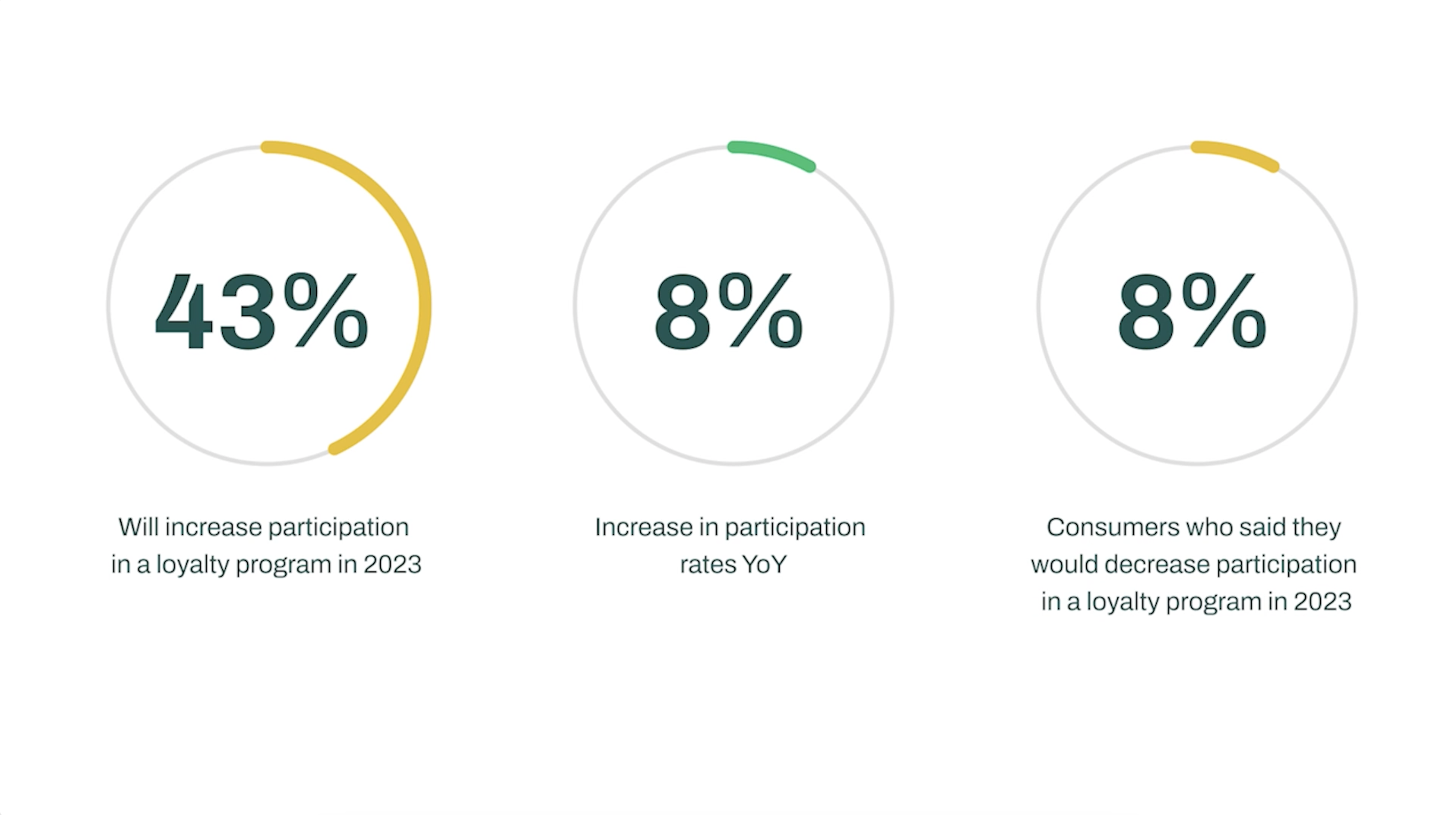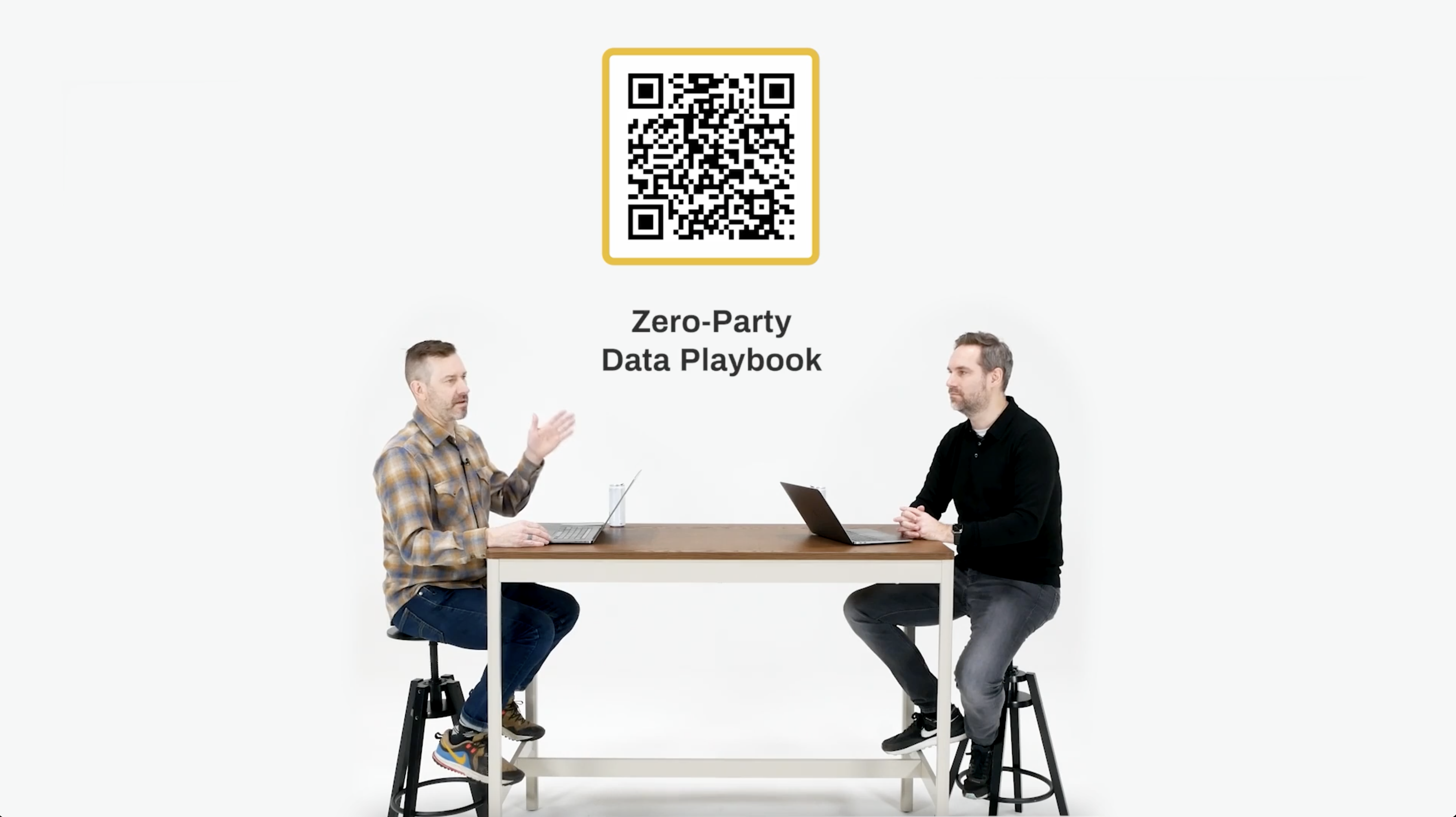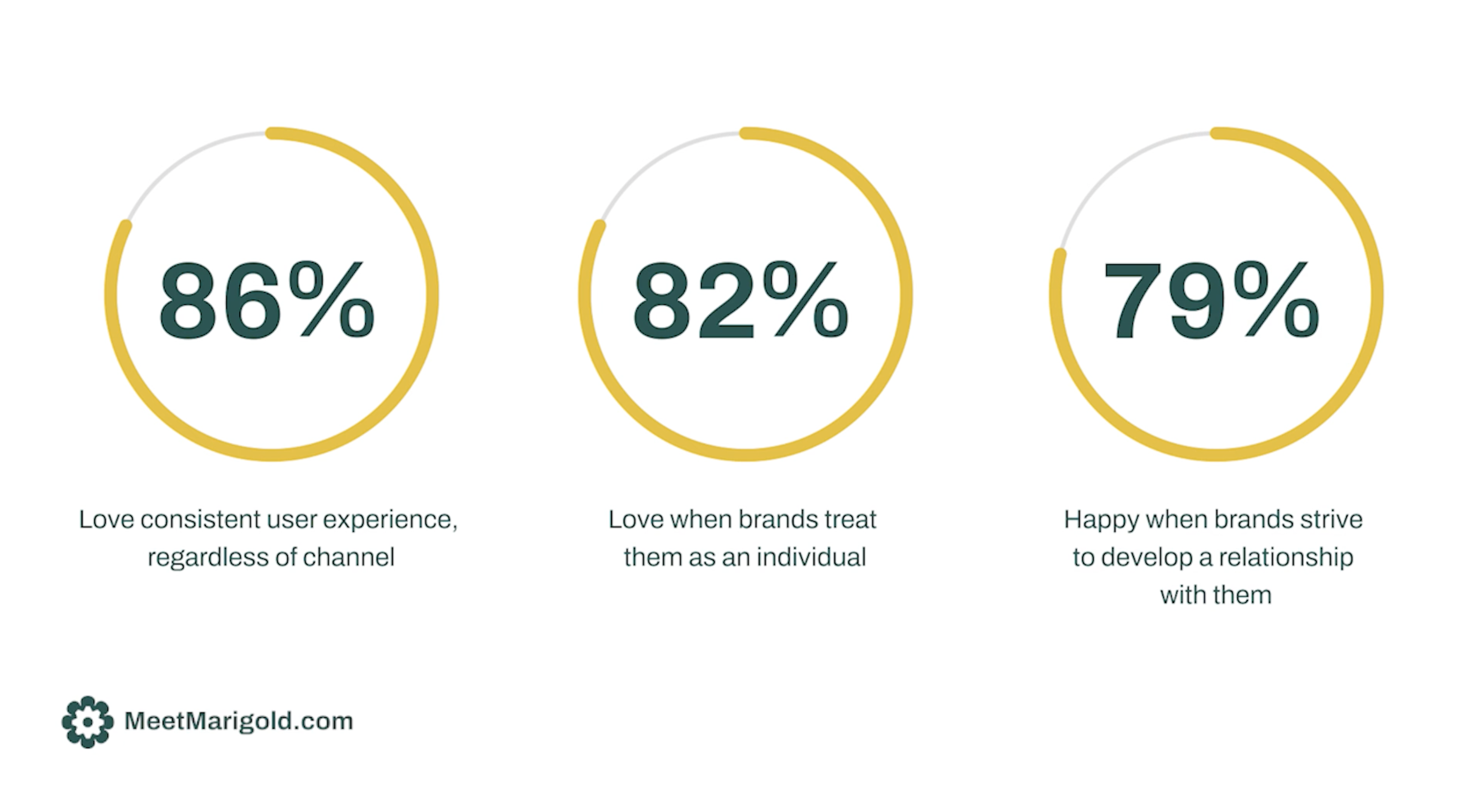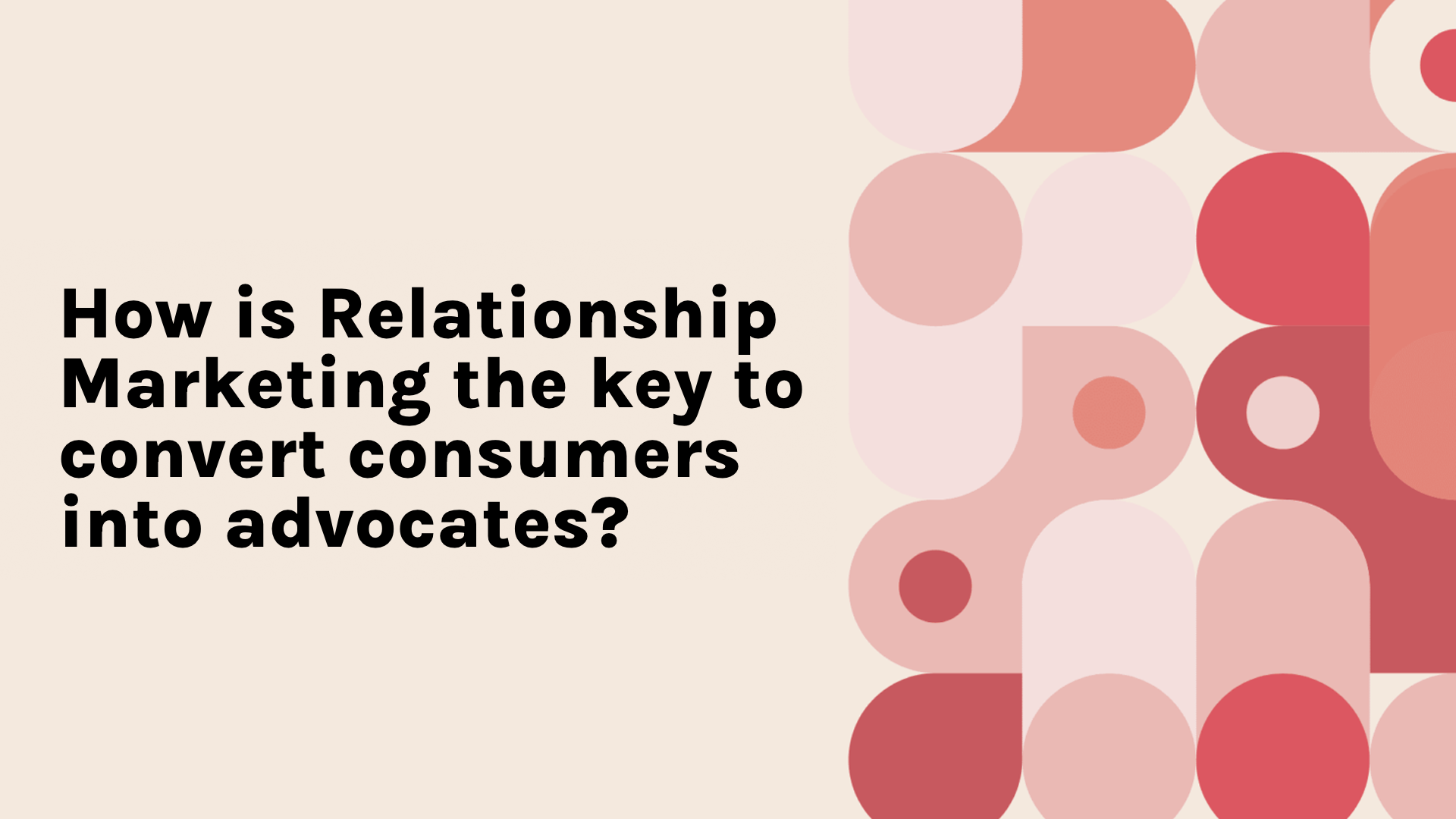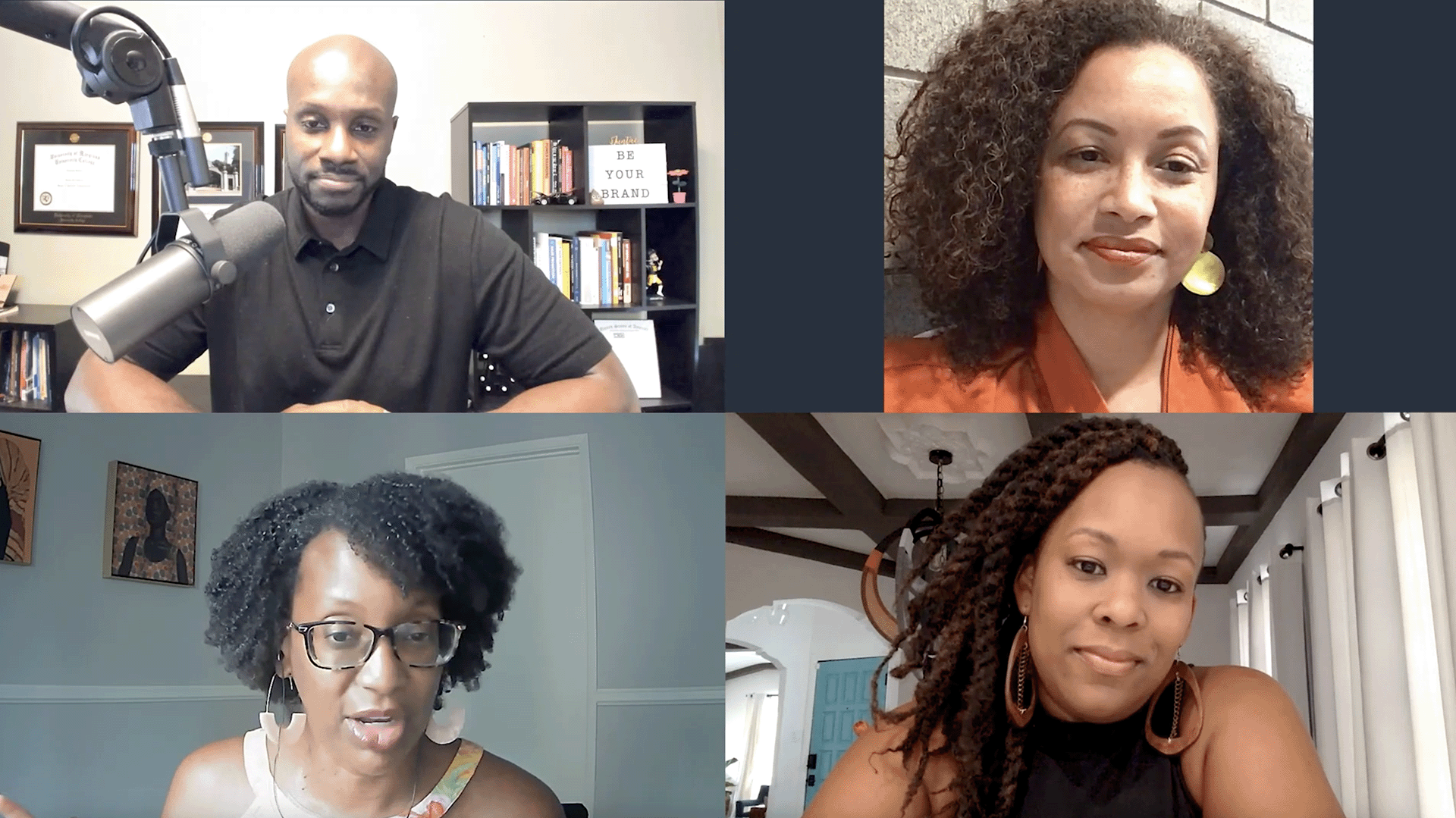The Power of Progressive Profiling and Scaling Customer Data Across Brands: Chris Muscutt of Pepsi Co.
- 0.5
- 1
- 1.25
- 1.5
- 1.75
- 2
Tim Glomb: These are sessions I really enjoy doing. I call them Big Idea Sessions with experts in their field, whether it's a MarTech guru or a branding expert or anywhere in between. I like to talk thought leadership and the future of technology and customer experience. Now today, I'm going to be talking with Chris Muscutt who's currently the head of MarTech in the UK for Pepsi Co. We've sat down and talked before. He's a huge fan of zero- party data. Pepsi Co is activating audiences at scale with our technology and he's got awesome ideas for the future. I'm going to ask him today specifically around progressive profiling, the idea of collecting more information from a known consumer and then using that data across brands to enhance that customer journey. I'm also going to ask him about, should clients and customers be able to pause the data that a brand has on them? Should they be able to change it temporarily? If today, you know me as a 48- year- old male, could I say, " Hey, I'm on vacation for the next two weeks, treat me like a 24- year- old," change my experience, adapt it to me. Lastly, I'm going to ask him about live events and big global events. How should brands be activating and thinking in a data- driven world? I know he's going to have great ideas, so let's get into it. These are Big Ideas. All right, Chris, it's always good to get together with you. Big Ideas, we certainly wouldn't have enough time to cover all the things we'd like to cover but let's start with the first one. I want to talk about progressive profiling with you. Progressive profiling, the idea of collecting different information from people over time. Collecting more, hopefully, psychographic information, interest, preference, data, et cetera. You're a huge fan of this. But also being a MarTech guy, you know the hurdles that it takes to actually activate this. So where do we start on progressive profiling?
Chris Muscutt: Yeah, agreed. There's this challenge that can't always ask for the same information each time but we always have to because we do things piecemeal. So we'll do a competition to win something, unpack promotion. And someone comes in, they'll put their first name, last name and email address, that ends the competition. And then the next brand will come along and because they don't have that data, they'll be doing first name, last name.
Tim Glomb: And specifically in that instance, you're talking through the lens, of say, Pepsi, where you have multiple brands engaging the same consumer from different points of view.
Chris Muscutt: Yeah, exactly. So wouldn't it be nice to be in the model where we recognize, could we reward them in some way, even if it's just content personalization, they will welcome back. We don't need your first name and last name, get to that stage. But then also, for me, the challenging part. Tech is one part but I think the challenging part is that value proposition. That means that person is almost joining in on that journey. They are getting value from each time that they do interact with a different brand. I think we were talking earlier about the idea that people don't really understand all of the Pepsi Co products in most cases. They see the Pepsi, they see the Doritos, they see the Lay's, but they don't connect with the same brand... Gatorade, all these different brands. I think the challenge is one opportunity we've got is can we communicate as that consolidated brand? What is that reason for someone to create a profile so that we can recognize them when they come back? And then how do we make that ongoing relationship worthwhile for them? And probably for us, as well, to generate new extra content. We do some really good things like Champions League, Super Bowl, we've got some good content but it's trying to get those brands to work together and work out how to feasibly create that ongoing value exchange. But, I think, in terms of the progressive profiling, in order to get that content, in order to get those people together, we've got to have a value of data that builds the business case on why do we want to find out what is the favorite sporting team? Where do they live? Those kind of questions. And I think I've tried to create a table showing about these different data sets, a consented cookie, an email address that we haven't verified and then all the way up to where we are getting this rich data. And we can put a value to it, it's quite easy to then say, " I think if we invest this amount, we'll get this many records of this value." And that kind of gives us that justification for doing it. And I've been trying to do that and trying to get different brand teams to start thinking about it that way. And I spoke about this a couple of weeks ago, just to see where other brands were. And I think obviously you can't get one model for the costing because each brand is different. Each region's probably different, as well. But I think that's going to be the important part for the market is to start thinking about it in that way in order to justify, we need two people to focus on content and this is the value they'll bring. We need someone to think about ongoing journeys across channels because we think this is the value it'll bring. And I think that's probably the immediate hurdle before we decide what tech delivers the different bits.
Tim Glomb: Yeah, that's fair. And look, I'll break it down a little bit. You almost need an internal menu that all marketers agree on for the value, of like a lion in them, right? So to your point, all right, first name is worth five cents, I'm making it up, right? And down the lane. But when you get into that rich data of their purchase intent or things that they really, really love, do you love the mountains? Do you love the beach, something or in between? Does that have a higher value, right?
Chris Muscutt: Yeah.
Tim Glomb: Creating that normalized board, to your point, now you can create an ROI model, basically. If we can get 15 pieces of data, has this value, so it's worth this investment to reach that.
Chris Muscutt: Yeah. Yeah, agreed.
Tim Glomb: It's a smart way to look at it.
Chris Muscutt: I think the other thing is trying to get the content to work a bit better. So many times I see this finished content for advertising or things like that and I think it's, can we be smarter with the way that we create the content, so at the beginning it's more of a template. So you can inject those personalization aspects, personalized background to be London, Rome, New York, whatever and kind of automate those parts. Because I think the reason most brands don't do it is because they see it as separate assets, a separate creative, going in and doing it. And I think those are the subtle bits but obviously the focus is what core content can we have with the Super Bowl, with Champions League, people are engaging with that because they're interested in the sports. Do we have content that relates to the matches, the players, fixtures, things like that to give them a reason to open up that email and want to click and come on and engage with an experience that might not give just the prize, it's giving them a value exchange of some sort.
Tim Glomb: Sure. And we know, look, value exchange is the heart of relationship marketing. It's also the heart of zero party data, that exchange. It's huge. And we know 58% of people just want better exclusive content. They'll take exclusive content as a value exchange. We know 73% of people in our global study this year said, " Hey look, I'd love a chance to win something." But I know you have strong opinions about that. You can't always give away these giant things. It's not sustainable over a year. So I think what you're saying is, " Marketers, you need to get together. You need to get with your brand partners, with your colleagues, determine the value of certain data set that you'd like to glean from an audience and then also be willing to activate on it. That's where I think a lot of brands miss the mark. Maybe they're asking for data or collecting data that really isn't that meaningful to their bottom line or it's not enhancing their customer journey and/ or they're just not using it in a timely manner. If I ask you, " Hey, are you a vegetarian or a carnivore?" I should act on that immediately when you give me the information, not six months from now when you forgot that I even asked it of you. So timeliness is a part of the equation.
Chris Muscutt: Yeah. No, it's an interesting point about collecting the data and then coming back a month later. That's in the borderline of creepy. But you're absolutely right. I've asked this because we're going to do this with it. We want to make sure that we only serve relevant products, Steve, because you've told us this information. Why do you need the hometown? Why?
Tim Glomb: Yeah. Are you going to use it?
Chris Muscutt: Yeah, exactly. Why? Oh, well we're going to see if there's any local promotions that are relevant for you so you don't have to look for them. And I think-
Tim Glomb: Fair.
Chris Muscutt: ...that's kind of the demonstratable value, I think, we've always got to be thinking about as part of these marketing campaigns.
Tim Glomb: Yeah, that's great. And everybody watching should be thinking about that. We have some great case studies from a client here. Bowtech, who, they sell a high end archery product. It's about roughly a thousand dollars and they sell one to a customer about every four and a half years. And when you talk about the value of data, they run a lot of sweepstakes, a lot of value exchange, small things throughout the year. We call it an always- on. But the single most important piece of data was, what's the most important attribute you're looking for when you're considering the purchase of a new archery bow, whether it's recreation or hunting or whatever. And the value of that data was immense because when they asked it and you said, " Oh, I'm looking for the smoothest draw. It's got to be very, very easy to shoot." Or, " I want it to be fast." Or, " I want it to just be lightweight so I don't have to carry it around all day and have it be heavy." They got a 53% lift in market share when they use that data and personalize emails and offers, getting people out of a competitor's product and into their own. Because obviously, if you said, " Hey, I want it to be really fast." Well, of course, your email said, " Hey, this is the fastest product you can buy." X Y Z continues that story. So think about it, what data could you activate? And not just what do you want to know but what could you activate to enhance that customer journey? I think that's a great point to bring up there.
Chris Muscutt: Yeah. And I think we were talking about the data we've got, how we're targeting people. And I think there was an interesting conversation recently about someone who said, " On a Friday, I don't want to be targeted as an age group. I feel different on a Friday." And, I think, do we give those consumers access to understand why they're getting those messages so they can tweak it? Because it's better value for us, we're targeting them and they're recognizing it and they're able to adapt to what they want to hear from. And I think it's interesting when you think about someone's mood, someone's age, where they are that week. If you're on holiday, do you want to be targeted on a holiday in the same way if you go into work? Things like that, it's an interesting-
Tim Glomb: You know, that comes back to human relationships, I'll personify that. So let's say you and your partner are traveling and you're just having a rough day or you had a rough day at work, it's like you'll communicate and say, " Hey, right now I just don't want to deal with these types of topics, can we change a subject to something else?" Now we still know you're head of a household or you're a father, whatever you are but if you could turn that off for a moment or be someone else or be in a different mood. The mood meter, I think, is what we kind of talked about. That's a really interesting concept. Imagine if somebody came to your website, you know their age, you know their demographic, you know some information that they gave you. How could they say, " I don't want to be 48- years- old right now. So treat me for the next week or two or three as a 25- year- old, I'm on vacation." To your point, send me inaudible for more fun offers. That's an interesting concept.
Chris Muscutt: It is. And now if you think about the different pools of data, I don't think any brand ever will get that context data, what you're doing. The fact that perhaps you've gone abroad and the fact that maybe you've gone with kids and things like that versus you are commuting to work. And, I think, I kind of describe it as the triangle in the fact that we might have a set of data that might be very, very rich but it won't have everything you ever want. Then you've got that in context data, things like a connected car. The fact that you are driving from A to B and you've been traveling for an hour, that gives an interesting bit of information that you're probably going to want to stop off. And then obviously then you've got the outlets that are selling your goods if you're not selling them direct or somewhere where the consumer will be going to. And I think that triangle of data, how you match those up, is going to be the challenge going forward especially with the drop of third party cookies and things like that. I think that's going to be kind of the problem. But how can you build enough data that those other two parties want access to it, to actually try and target a customer that they don't have on their channel.
Tim Glomb: So, that's a great concept. Do you think that's a blend of skillset and humans that need to organize around that idea? Or is it just technology that's going to get all these contextualized signals in real time so that you can make the match with other partners? Do you think you got to start with the people or you start with the technology? What would be your guess?
Chris Muscutt: I'm going to just say both, sadly. Because I think you've got to do some prep work, groundwork, to get things working. But I think on the people's side, both on the trust of the consumer, we're not talking about sharing data. We're not giving first party data over to someone who didn't consent. We're saying, we can better target a message. If you've consented to marketing and you've consented to having partner offers, then that's a great audience. So we are saying we've got really good information to say that this person wants, on a Friday, to be treated like they're younger than they are and they want to be targeted with offers that might entice them into bars, restaurants, things like that. That's good data that someone else over here wouldn't have. So I think that kind of scenario is one part. But obviously in terms of, that's a big change, in this case, we're not selling our own products, we're selling someone else products if, I'm not saying that Pepsi Co are planning to do this. But I think just in the world of changing how we use data in different organizations, this is the kind of push, I think, on how the organization would work. You're talking about making the website a bit more engaging. You're really trying to give value, as we said before, the demonstratable value. We've asked you for this information so we can deliver something more than the same types of product recommendations. We can kind of broaden the horizon. I think new airlines do this a lot. We did do a campaign in the UK with easyJet but the idea that they do lots of different promotions on their sites. I think, new airlines, they've got such cross sell, not only just the airport visit, they know you're going to the airport so then you've got duty free or all these things. And I think that's one industry that have already started this kind of using the context data that probably wouldn't be available to those stores in the shop. And, I think, the Heathrow app and the New York app are good examples of that.
Tim Glomb: Yeah, that's great. I mean you're basically turning a brand into a media company making connections, right? And I just talked to Paul Brierley over at the Football Association here in the UK where he said, " Look, Tim, part of our value exchange to our audience, there's 30 million football fans in England alone, is providing the unexpected offer or value." So they have 27 brand partners because you shared some information or get some contextual signals, they can give you an offer from a trusted partner and all of a sudden that made your life better. And it's not necessarily something that the FA is trying to sell you but it is something of context and relevance. So turning yourself into a media company and making those connections in near real time that's the future of data for good.
Chris Muscutt: Yeah, I think so.
Tim Glomb: I like that.
Chris Muscutt: Yeah.
Tim Glomb: All right, Chris, so these are big ideas. But I got another one I want to ask you because you're kind of a futurist and you're in the mix here, you have a good feel for what's going on. Will there be a point where there are too many brands asking too much information from an individual consumer? At Pepsi you have multiple products and as you said, progressive profiling and sharing that across one big brand is the ultimate goal. Less silos, more combined use, better consumer journey across products. But will there be a tipping point where too many brands are asking too much of consumers? Are we going to be at a point where consumers are like, ahh, overload?
Chris Muscutt: Yeah. I think that there are two parts to it. Do I feel that I've lost control of my data, is one part. I think some of these bits of data you asked for is repetitive. You know, you always ask for mobile phone number, perhaps, and where you live. If you did move, there's no way a consumer is going to be going to all of those different brands and doing it. So is that data now out of date? So I think there is kind of a role of what the social sign on promised with the fact that you used one set of details. And obviously, I think, the trust was lost from that and people have moved away from it. I know in past experience the adoption rates, social sign on, just disappeared. Everyone wants to create a new account because they felt more in control of it. But, I think, is there a space now where perhaps some of those core preferences and that control of being able to share that is the role of some of the bigger brands to maybe build that and have that partner sharing? I don't know but I think there's certainly an opportunity there. And I think one of the goals is, from a consumer, how to us as brands make their life easier, how do we deliver value to them? I mean, I think this is one part. I think relevancy is definitely the other. No one wants to be bombarded with things that they aren't interested in. And obviously what we've been talking about is if the data's wrong, they are going to be bombarded. So how can we make their life easier so that they're in control? So I think that's definitely something, what the answer is, which we'll have to see.
Tim Glomb: Time will tell. Well, smart MarTech guys like you will hopefully guide us and solution providers like ours will adapt and we'll figure that out. But cool, this has been great, Big Ideas. Do we have one last future prediction or anything we want to close on, that will be a hot topic we can follow up on next year?
Chris Muscutt: I think we could talk about the World Cup. I think we could just talk about seeing what people do. I don't know what people are doing but I think I'm going to be really interested to see if people use that kind of understanding that people are going to be watching the games. Can they connect the data they've got about someone to the fact they might be watching the game? Will they be at home? Will they be out and about? Actually, I think this year is the time where, with COVID, people have had some time to really optimize things. It'll be interesting to watch this World Cup to see whether you think of home delivery. If someone knows that someone's going to be watching the match at home and it's at 8: 00 in the evening, that's going to be a good target. So I think that's going to be the exciting part, just to see what happens on the build- up and then during the World Cup to see if we do get better relevancy and more interaction near realtime.
Tim Glomb: Well, that is interesting. The real time factor of that. And look, the Super Bowl, the World Cup, these are still the defining live conjoined moments where everyone has to be there at that moment. And yeah, there's a lot of data that can be thrown around, tossed around and used to enhance those experiences during events like that. Time will tell, we'll see what comes out this year, right?
Chris Muscutt: We will.
Tim Glomb: Cool. Well this is always great to talk to you, some Big Ideas. Hope to see you and talk about more because there's going to be more to talk about, that's for sure.
Chris Muscutt: Yeah and I thank you.
Tim Glomb: All right, bye. We'll see you soon on the next one.
Chris Muscutt: Cheers.
DESCRIPTION
Brands as large as PepsiCo aim to collect as much consumer data as possible and then scale that across their brands to deliver exceptional experiences. Seamlessly activating that data is hard, and technology is only part of the solution.
Learn how Chris Muscutt, Marketing Technology Lead at PepsiCo, views this challenge and why progressive profiling consumers to enhance their experience is key.
Takeaways:
- What is the value of a given data point and can you make a business case to collect it?
- How does technology help provide seamless experiences across brands
- What does the future hold for enterprise brands that engage across global events?
Today's Guests

Chris Muscutt



